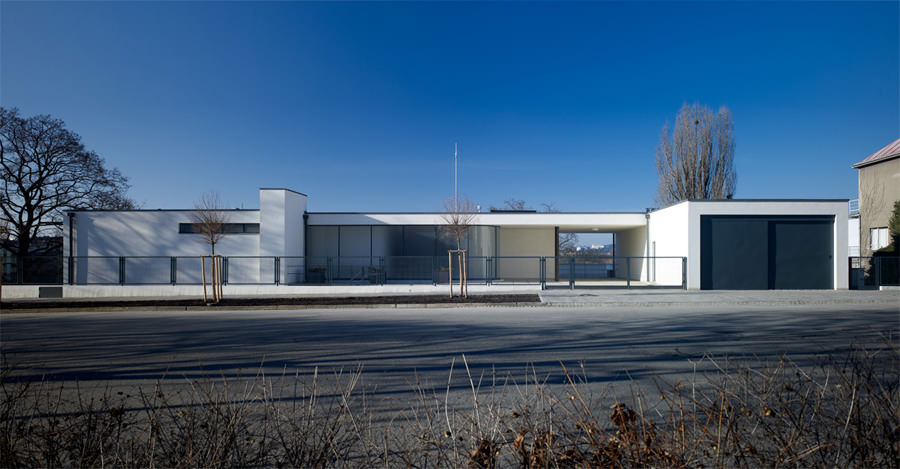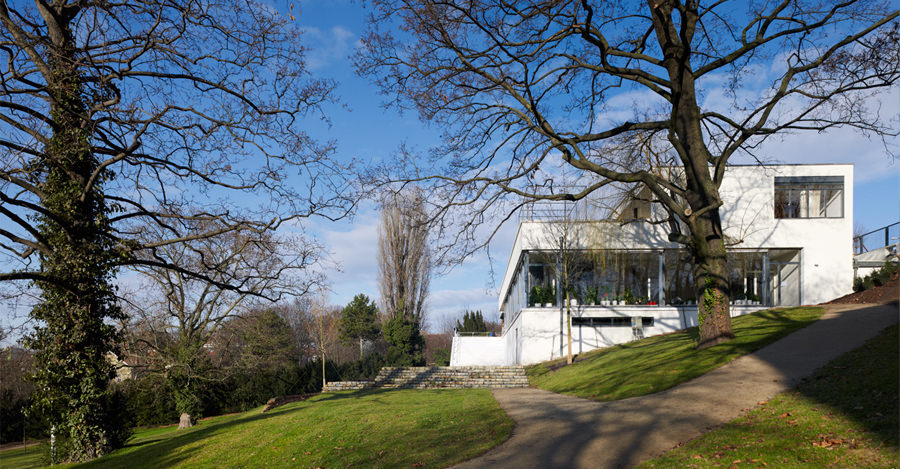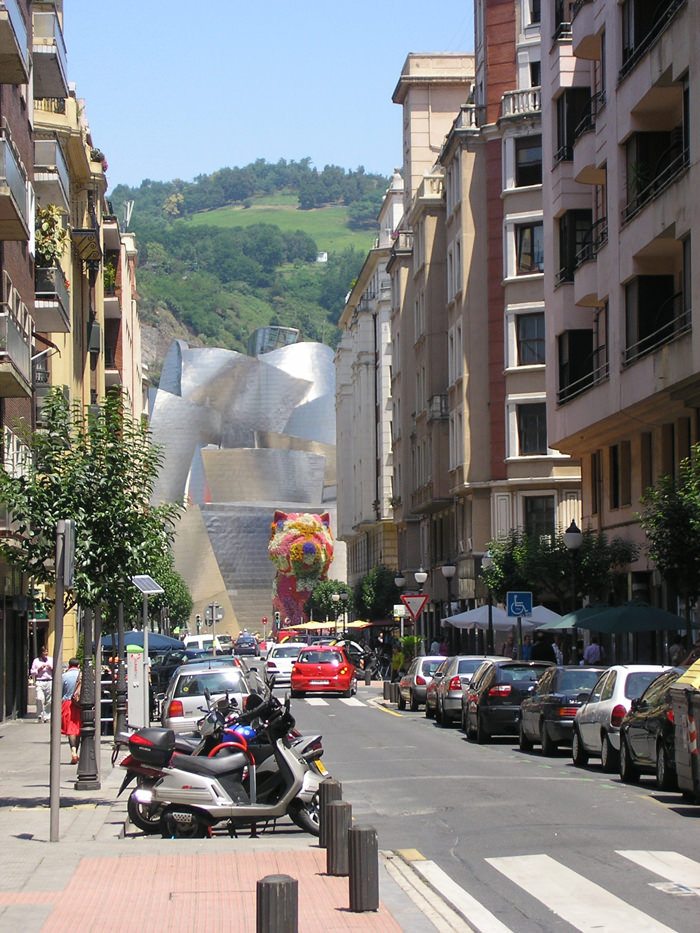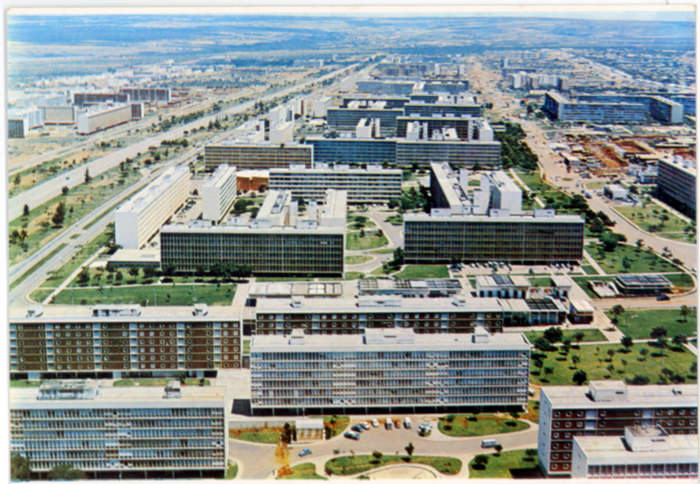-
Barry Bergdoll is The Philip Johnson Chief Curator of Architecture and Design at the Museum of Modern Art and Professor of modern architectural history in the Department of Art History at Columbia University. Holding a B.A. from Columbia, an M.A. from King’s College, Cambridge, and a Ph.D. from Columbia, his broad interests center on modern architectural history with a particular emphasis on France and Germany since 1800.
WHEN
THE
BUILDING
COMES
AS A
SURPRISEBarry Bergdoll speaks
about traveling to Brno,
Brasilia, and BilbaoInterview by Jessica Bridger

Villa Tugendhat sits on a residential street in Brno. The street-facing façade implies a rather simplistic relationship between site and architecture ...

... but viewed from the garden it reveals the real complexity of Mies van der Rohe’s design and the relationship between inner and outer spaces. (Photos: David Zidlicky)
-
What stands out to you as some of your most notable experiences when you have made a pilgrimage to visit a work of architecture?
“When I consider the architectural pilgrimages that are of importance to me, I think first of the buildings I’ve sought out because I saw them in photographs or read about them in a books, but which then led to the revelation that what I was seeing and experiencing was different from what I’d been led to expect. The best experiences were when the buildings had fundamental qualities that I felt were moving, important, and profound, but that those qualities had been somehow eliminated from the transmitted experience of the building by reportage or photographs. When the building turns out to be infinitely better than what’s been said about it. When the place is a surprise.
The first time this happened for me was in Brno at Mies’ Tugendhat House. I hadn’t realized that it was a more complex and completely different building than I’d expected from reading about it: in its landscape, in its cityscape, and in the way it related to everything around it. Even simply seeing how the Tugendhat house is unlike the other houses on the street, so they are always cropped out of the»I would argue that you really don’t understand the Tugendhat house unless you spend a few days in Brno and get to know the city.«
photographs – its difference from what surrounds it is part of understanding it. I recognized there in Brno the extent to which snapshots of buildings tend to crop out the surroundings, and how plans are shown in the abstract on white paper without topography.
On the other hand, Brno is a capital of the modern movement in architecture –though I defy anyone other than a true expert to name another important building there from that period. The difference between what the Czech architects built and the absolute luxury of Mies, with thirty times the budget, comes into focus. The intersection of the art historical aspects with the political, social, and economic conditions in Brno is important. I would argue that you really don’t understand the Tugendhat house unless you spend a few days in Brno and get to know the city.
More recently I was in Brasilia. I was part of a generation taught to perceive it as the absolute epitome of abstract, aggressive modernism, built for the car, a total failure. Once I arrived I was waiting to have that impression, so I could go home and say the same thing. Instead I discovered this incredibly interesting place and an amazing work of landscape. -
Small-scale planning gestures create places that are textured and complex, especially in the spaces around the so-called Superquadra. And 50 years after Brasilia’s creation, things there really function beautifully. I came away thinking Brasilia has a great deal of urbanity to it and is a successful city, and I had to overcome everything I’d been taught about it in order to realize that.
The problem with architectural pilgrimages is that commonly people go to see the one trophy and leave: you go to Bilbao see Gehry and leave; you run to Brno and see the Tugendhat house and leave. Often the trips are responding to the idea of the heroic architect, the starchitect, and basking in that aura. Almost as if to check something off a list of what is supposed to be important and not to criticize or analyze. I wish that architecture students going to these places would take a sketchbook and not only a camera.
The phenomena of what is important and the consolidation of a received view happen startlingly fast. For example, I decided while I was on vacation in the south of France to visit Bilbao on a whim, a week after it opened to the public. I was in a period where I was a bit off Gehry’s architecture. We decided to drive to see the building, which took three days – a little bit of a pilgrimage. The building was so much more than the talking points that had somehow become the only public comment. I think that Gehry's Guggenheim Bilbao is one of the most successful, important, and simply unexpected and subtle buildings of the early 1990s, particularly in the way it relates to its urban fabric. It seems an opinion gains a certain weight through replication, and only then is there some kind of trend-breaking happening, someone expressing a contrary view. I would be curious to see how this happens – how fast, in what way, to see a sociological explanation of this pattern.
I’ve also noticed the phenomenon of shifting pilgrimages. For example, I haven’t met anyone recently who’s been to Bilbao. When does it get too late to jump on the bandwagon? Currently what I find most interesting as architectural pilgrimages are places like the Open Air Museum of Modern Architecture in Ivrea, Italy, located at the site of the former Olivetti industrial complex. Sites that trace our industrial heritage.”

The Guggenheim Museum, Bilbao, as seen from a side street. (Photo: Nigel Europe/Flickr)

Souvenir postcard of Brasilia’s Super Quadra.
-
Search
-
FIND PRODUCTS
PRODUCT GROUP
- Building Materials
- Building Panels
- Building technology
- Façade
- Fittings
- Heating, Cooling, Ventilation
- Interior
- Roof
- Sanitary facilities
MANUFACTURER
- 3A Composites
- Alape
- Armstrong
- Caparol
- Eternit
- FSB
- Gira
- Hagemeister
- JUNG
- Kaldewei
- Lamberts
- Leicht
- Solarlux
- Steininger Designers
- Stiebel Eltron
- Velux
- Warema
- Wilkhahn
-
Follow Us
Tumblr
New and existing Tumblr users can connect with uncube and share our visual diary.
»Where there is nothing, everything is possible. Where there is architecture, nothing (else) is possible.«
Rem Koolhaas
Keyboard Shortcuts
- Supermenu
- Skip Articles
- Turn Pages
- Contents


